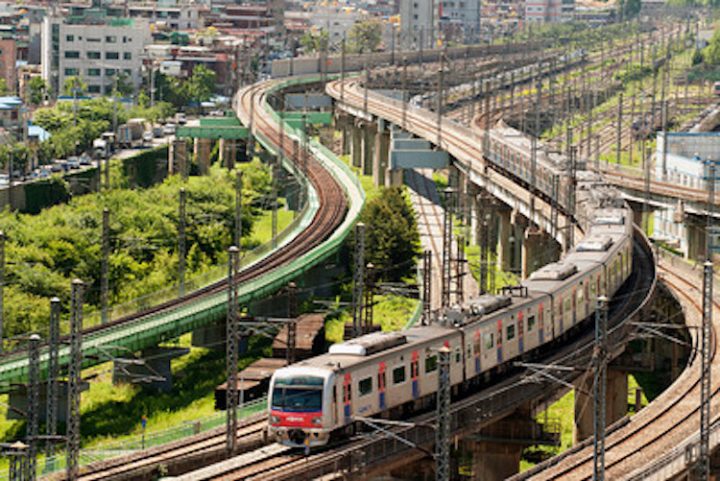Viewpoint by LI Hong
LI Hong is Permanent Representative of China to the United Nations Economic and Social Commission for Asia and the Pacific (UNESCAP) in Bangkok, Thailand.
BANGKOK (IDN) – The Silk Road, which is a route linking several major world civilizations 2000 years ago, is invigorated by the Initiative of the Silk Road Economic Belt and the 21st Century Maritime Silk Road (BRI) proposed by Chinese president Xi Jinping in 2013.
The Initiative represents a long-term transcontinental vision for enhanced global economic cooperation and integration. It seeks to underpin future growth, prosperity and sustainable development by promoting policy dialogue and coordination, seamless connectivity, trade facilitation, industry development and people-to-people communication.
Chinese public product
BRI is a national initiative proposed by China, but it is targeted at the long-existing economic and structural problems both in China and the world. It serves the development objectives of nations stretching over a large geographical area. BRI responded to the global demands for development with vision and direction for joint action. It is a combination of traditional oriental wisdom and ‘globalization’ thinking for regional and even worldwide economic cooperation and common development.
By proposing broad trans-continental connectivity efforts, BRI is trying to present an interconnected Asia-Europe-Africa perspective, with a view to strengthening the flow of all economic activity and bringing prosperity to the routes. By suggesting unprecedented transnational economic corridors, BRI is aiming for the widest participation in the global value chain and bringing industrial and innovative capacities to the developing countries along the routes.
Supplemented by financing tools like the Silk Road Fund and Asia Infrastructure Investment Bank (AIIB), BRI is deemed as a well-designed public product for economic cooperation and integration. Active responses and wide participation from the international community have made BRI a multilateral initiative. It has been recognized as a visionary and operational proposal for drawing the world economy out of sustained sluggishness and for bringing the Euro-Asia continent and beyond into a more balanced, inclusive and sustainable development.
No game changing, no hidden agenda
While presenting a grand strategy for cross-regional development, BRI tried to generate new impetus for growth by economic re-balancing. Inside China, it is targeted at the development gaps between eastern and western and coastal areas and inland provinces. At the global level, while East Asia and Europe are the two most dynamic and advanced economic centres in the Euro-Asia continent, South Asia, Central Asia and the Middle East are more underdeveloped. Diffusing the development benefits from the developed areas to the under-developed ones and unleashing the potential of landlocked areas of the continent is a promising perspective.
Based on that assumption, BRI identified seamless connectivity as the driving force for economic re-balancing, establishing the connections of the east-west economic centres to release a great geographical and resources potential. BRI encourages and calls for the broadest possible joint action for building cross-border infrastructure networks with a view to facilitating the flow of goods and raising the efficiency for resources allocation and extending the value chain to more remote regions.
BRI embraces its partners to carry on the connectivity agenda in line with their national priorities, and it supports the implementation of the multilateral connectivity arrangement such as the Asia Highway Network Agreement, the Trans-Asia Railway Agreement, by providing political support, investment guidance, cross-border facilitation etc. There is no hidden agenda.
What the BRI is pursuing the partnership based on equal-footing consultation, mutual respect and trust, mutual benefit and win-win cooperation. BRI is carried forward under the existing international order. It respects and observes the rules and laws under the current multilateral systems. It favours the underdeveloped regions and countries and embraces multilateral spirit.
The Euro-Asia continent has never been so motivated and so full of enthusiasm for connectivity in all fronts and at all levels. BRI’s contributions to such positive scenarios are well regarded. Those who keep talking about BRI’s geopolitical implications or China’s hegemony ambitions really need to change their cold war mentality
Achievements so far are encouraging
So far, over 100 countries and international organizations have given active responses to BRI. Over 40 countries and international organizations have signed cooperation agreements with China on BRI cooperation. By synergizing each other’s development strategies and plans, a number of landmark projects were kicked off. AIIB loaned $5.3 billion to projects related to BRI. The Silk Road Fund pool reached $40 billion and had launched batches of investment projects.
China is engaged in industrial cooperation with more than 20 countries in building at least 56 trade and economic cooperation zones with over US$18.5 billion of investment, which has generated nearly $1.1 billion in tax revenue and created 180,000 jobs for the host countries.
Chinese enterprises have so far invested more than $50 billion to countries along the BRI, which promoted the local economy and created great job opportunities, delivering real benefits to the people of relevant countries. Only last year (2016), China’s trade volume with the countries along the route hit $1 trillion, and its direct investment in these countries amounted to US$14.5 billion. Enriching the Belt and broadening the Road will bring more and more benefits and prosperity for people in the Euro-Asia continent.
Beijing will convene the BRI Forum for International Cooperation this weekend (May 14-15). Leaders or senior representatives from more than 110 countries and 30 international organizations are expected to attend the Forum. The grand gathering will further build political consensus, brainstorm interconnected development strategies, deepen partnerships, and bring about a new landscape for balanced development. Whether for the substance to be discussed, or the political and symbolic message to be released, the Forum deserves due attention and appreciation. [IDN-InDepthNews – 11 May 2017]
Photo credit: Trans-Asian Railway. Credit: UNESCAP
IDN is flagship agency of the International Press Syndicate










